|
As the Blitz continued into January, local ARP filed three reports this month.
5 Jan 1941: 15 high explosives at goods yard at Bishop’s Stortford station, damage to trucks and embankment, no casualties.
Despite the size and vulnerability of Bishop’s Stortford’s railway station and goods yard, this seems to have been the only daylight attack during the entire war. A lone bomber flying close to the ground above the southbound track, released its bombs on sidings opposite the Tanners Arms public house in London Road. Some failed to detonate but those that did hit and destroyed several wagons containing sugar beet. Fortunately the attack happened Sunday lunchtime and with few people around no one was injured.
10 Jan 1941: 2 high explosives half mile south east of Bishop’s Stortford, no damage or casualties.
15 Jan 1941: 1 high explosive north west of Bishop’s Stortford, damage to road, sheds and water main, no casualties.
British civilian casualties figures for January: 1,500 killed, 2,012 injured
British civilian casualties figures for February: 789 killed, 1,068 injured
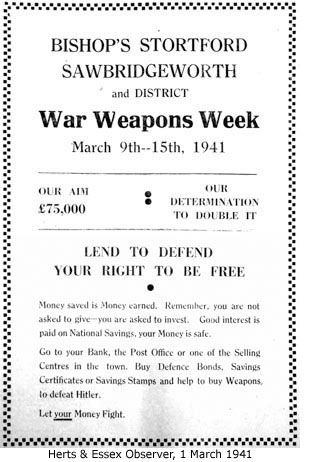 In March the financially challenged British Government launched another National Savings incentive called ‘War Weapons Week’. Heavily publicised in the national and local press, the public were asked to ‘help buy weapons to defeat Hitler’ by purchasing Defence Bonds, Savings Certificates or Savings Stamps. Rising to the challenge, organisers of the Bishop’s Stortford, Sawbridgeworth and District fund (due to take place 9–15 March) optimistically set their sites on raising £75,000. So none were more surprised than they when by the end of the week the public had invested over £184,000. In celebration of this phenomenal amount, the final day of the campaign was marked with a military parade in Sawbridgeworth and Bishop’s Stortford – a detachment of 90 armed infantry from a north of England regiment that had survived Dunkirk, marching through both towns. In March the financially challenged British Government launched another National Savings incentive called ‘War Weapons Week’. Heavily publicised in the national and local press, the public were asked to ‘help buy weapons to defeat Hitler’ by purchasing Defence Bonds, Savings Certificates or Savings Stamps. Rising to the challenge, organisers of the Bishop’s Stortford, Sawbridgeworth and District fund (due to take place 9–15 March) optimistically set their sites on raising £75,000. So none were more surprised than they when by the end of the week the public had invested over £184,000. In celebration of this phenomenal amount, the final day of the campaign was marked with a military parade in Sawbridgeworth and Bishop’s Stortford – a detachment of 90 armed infantry from a north of England regiment that had survived Dunkirk, marching through both towns.
March: Jam rationed
As a reminder of the danger of bombing the H&E Observer dated 29 March, published a syndicated article by ‘A Special Correspondent’ headlined ‘How To Fall When You Hear A Bomb Coming Down’. It’s hard to believe that anyone needed telling how to fall when a bomb was whistling their way but apparently, due to the great British ‘reserve’, many English people felt it undignified to dive to the ground for cover. Even more profound was the fact that people were reluctant to do so because it might dirty their clothing. The rather obvious conclusion drawn was that neither of these things should prevent anybody from seeking safety on the ground, because the alternative could be death.
War or no war, criminal activity in the town (and everywhere else for that matter) continued – especially dealings in the ‘black’ market. Getting a prominent mention in the court reports in March, local man Charles Judd, 36, owner of the Acme Cafe in London Road, was jailed for 12 months on five charges of receiving stolen property. Items recovered ranged from jars of jam to petrol, the prosecution describing his cafe as a clearing-house for thieves.
Because crimes was so rife during the war, between 1939 and 1945, 178,000 indictable offences were created for the inhabitants of England and Wales. It now seems logical to suppose that if there hadn't been quite so many indictable offences, then perhaps the crime statistics might not have appeared so bad.
British civilian casualties figures for March: 4,259 killed, 5,557 injured
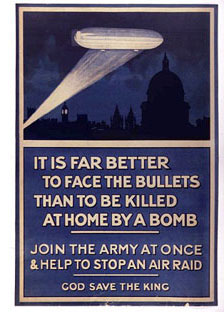 In April the resignation of a local Billeting Officer led the Civil Defence Committee to advertise for a suitable candidate at a wage of £2 per week. Hertfordshire County Council informed Bishop’s Stortford UDC of an 8 week delay for whistles required by the town’s ARP wardens and members of fire parties, and local council workmen asked for a wage rise to meet the increased cost of living. Despite having already received two bonuses of two shillings (20p) each time, the council recommended a further rise of four shillings (40p) per week war bonus. Many residents expressed ‘indignation at such extravagance’ but the council couldn’t exactly argue with the request, having already given a substantial bonus to officials and office staff. In April the resignation of a local Billeting Officer led the Civil Defence Committee to advertise for a suitable candidate at a wage of £2 per week. Hertfordshire County Council informed Bishop’s Stortford UDC of an 8 week delay for whistles required by the town’s ARP wardens and members of fire parties, and local council workmen asked for a wage rise to meet the increased cost of living. Despite having already received two bonuses of two shillings (20p) each time, the council recommended a further rise of four shillings (40p) per week war bonus. Many residents expressed ‘indignation at such extravagance’ but the council couldn’t exactly argue with the request, having already given a substantial bonus to officials and office staff.
All things considered, council coffers must have been well placed at this time because also announced was a decrease in the general rates of 8d (4p) in the pound for the coming financial year. The situation was certainly helped by the government's offer of a grant of fifty percent towards the building of public air-raid shelters at Station Road bridge, although no help was forthcoming for a shelter at Apton Road, the estimated cost of which was £600. The likely reason was because the site hadn't yet been requisitioned. This wasn’t the case in Rye Street where land for a public shelter was secured from Mr B Markwell. Also secured was accommodation for two nursery schools for evacuated children, one at 28 Windhill requisitioned on behalf of the Ministry of Health, the other at Foresters’ Hall, Church Street. Also in Church Street, the cells of the old police station were used as an auxiliary cleansing station.
On 8 April ARP recorded: Small number of incendiaries in Bishop’s Stortford, no damage or casualties.
On 30 April a Hawker Hurricane was shot down over Thorley, thought to be at Double Gate. The Commonwealth pilot was killed instantly as his plane dived vertically into the ground.
British civilian casualties figures for April: 6,065 killed, 16,926 injured
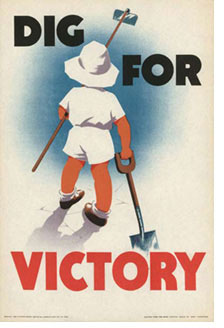 As Britain’s Forces became more widely stretched at home and abroad, the British age limit for call-up was raised from 40 to 51. Exempt occupations considered essential to the war effort at home included Tax inspectors, engineers and coal miners. As Britain’s Forces became more widely stretched at home and abroad, the British age limit for call-up was raised from 40 to 51. Exempt occupations considered essential to the war effort at home included Tax inspectors, engineers and coal miners.
At Thorley, a bomb that fell close to the Coach and Horses public house in London Road failed to detonate, as did another that landed in allotments opposite the Old Police Cottage, also in London Road. Not so fortunate was Thorley's future cricket pitch near Thorley Place, where one of a stick of bombs dropped in daylight hours by a lone enemy bomber exploded leaving a large crater. Random bombing was probably responsible for incendiaries that landed around Thorley church one night, disaster being averted only by the sheer good fortune that Thorley Home Guard happened to be passing at the time. They patrolled nightly between the Green Man pub (since demolished) and London Road (Thorley Street) and were close enough to extinguished them before they could explode. Thorley Home Guard's Commanding officer Major Tom Skeeter, who lived at Thorley Place, always allowed the platoon to use a room in his house for rest periods.
In London, the Luftwaffe dropped so many incendiaries and high explosives each night that those living on the Uplands farms at Thorley, regularly witnessed the southern sky turn red as the docks and East End burned. The heaviest attack received by the capital was on 10 May. One third of all streets within Greater London were rendered impassable and 155,000 families were left without gas, electricity and water. 1,436 people were killed that night and 1,792 seriously injured. The following night the RAF sent 92 aircraft to bomb Hamburg.
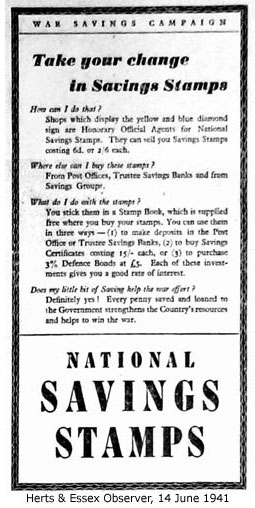 On 16 May, after eight months of almost continual bombing of British cities, the Blitz ended. Hitler, having now set his sights on the invasion of Russia, called off the mass attacks to move his bombers east. The RAF, however, didn’t reciprocate and continued to bomb German cities and industrial areas. Despite Hitler’s change of plan the building of public air-raid shelters continued, though by now many people in Bishop’s Stortford completely ignored the air-raid sirens and rarely used the shelters. To find out exactly who did use them, the council invited people to register for admission tickets and employed shelter marshals to supervise entrance. On 16 May, after eight months of almost continual bombing of British cities, the Blitz ended. Hitler, having now set his sights on the invasion of Russia, called off the mass attacks to move his bombers east. The RAF, however, didn’t reciprocate and continued to bomb German cities and industrial areas. Despite Hitler’s change of plan the building of public air-raid shelters continued, though by now many people in Bishop’s Stortford completely ignored the air-raid sirens and rarely used the shelters. To find out exactly who did use them, the council invited people to register for admission tickets and employed shelter marshals to supervise entrance.
On the town planning front, permission was granted to the Ligature Department of the London Hospital for an extension to the clubhouse in which they were now based at Bishop’s Stortford Golf Club (See Guide 10 – Brooke Gardens). Permission also for the owner of 27 Hockerill Street to erect a greenhouse in his garden. The optimism shown by this householder that perhaps the worst was over was also shared by H&E Observer gardening columnist Roy Hay, who continued to headline his weekly column ‘Planning Your Victory Garden’. Even the H&E Observer’s editorial agreed that the war now seemed to be turning in Britain’s favour, but did err on the side of caution by urging people not to relax too much – the best maxim being ‘Hope for the best prepare for the worst.’
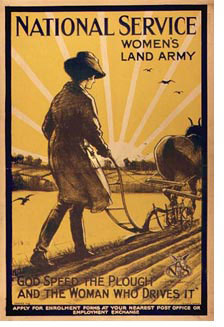 The likelyhood of parents of evacuee children reading and taking note of such wise words was pretty remote, and countless evacuee children were taken back to the cities. Their departure, however, made little difference to complaints of a local food shortage by the Bishop’s Stortford branch of the Women’s Co-operative Guild. Their argument certainly seemed a valid one because since the start of war, although Stortford’s population had risen by some 60 percent, poor distribution methods meant that supplies were still being allocated on a 1938 basis. The likelyhood of parents of evacuee children reading and taking note of such wise words was pretty remote, and countless evacuee children were taken back to the cities. Their departure, however, made little difference to complaints of a local food shortage by the Bishop’s Stortford branch of the Women’s Co-operative Guild. Their argument certainly seemed a valid one because since the start of war, although Stortford’s population had risen by some 60 percent, poor distribution methods meant that supplies were still being allocated on a 1938 basis.
Announced by the government in May was that the Women’s Land Army was now more than 11,000 strong, that public savings to aid War Weapons Week had raised £124m, and that cheese was to be rationed.
British civilian casualties figures for May: 5,394 killed, 5,181 injured
The invasion alert of 1940 led to several concrete Pillboxes being erected around the town and at Thorley, including one located at the corner of Pig Lane and London Road, near to an anti-aircraft gun emplacement. It’s doubtful this gun was positioned solely to protect nearby Featherby’s factory (later Millars), but if it was it failed in its duty. Incendiary bombs hit the factory on several occasions, though thankfully with little damage. Featherby’s played an important role in the war effort including the repair of tanks, which regularly travelled along the old A11 en route to the factory. The road is said to have been permanently ridged by their heavy tracks. On arrival, they would await repair parked in the [former] gravel-pit ground opposite the factory near the bottom of Thorley Hill.
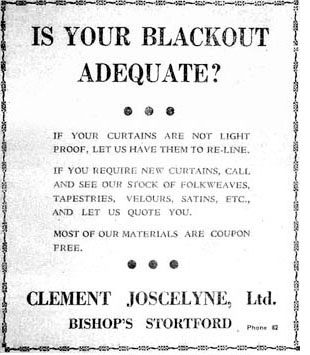 Clothing was rationed from 1 June and later in the month so too were eggs. On the plus side, at least the Luftwaffe's bombings and nuisance raids had eased considerably. In the town, though, there now seemed more people in uniform than ever before: Forces personnel either stationed here or on leave, policemen, the Home Guard, Civil Defence, Women's Voluntary Service, and many boys aged 16 – 18 who had joined the *Air Training Corps (ATC). Membership of the ATC was also open for much younger lads but they couldn’t wear the uniform until aged 16. ATC training took place in the evenings at Bishop’s Stortford College. Clothing was rationed from 1 June and later in the month so too were eggs. On the plus side, at least the Luftwaffe's bombings and nuisance raids had eased considerably. In the town, though, there now seemed more people in uniform than ever before: Forces personnel either stationed here or on leave, policemen, the Home Guard, Civil Defence, Women's Voluntary Service, and many boys aged 16 – 18 who had joined the *Air Training Corps (ATC). Membership of the ATC was also open for much younger lads but they couldn’t wear the uniform until aged 16. ATC training took place in the evenings at Bishop’s Stortford College.
*Formed in 1938, and administered by a committee of local citizens, the ATC organization provided the means of giving part-time training to young men destined for the Royal Air Force. It achieved a wartime peak of 210,000 cadets, and it is estimated that some 170,000 trained ex cadets had entered the Services by the end of the war.
A report in the H&E Observer dated 14 June, told of landlords complaining that tenants digging up front or back lawns of their properties [to grow their own vegetables] were spoiling their appearance. On a much sadder note the paper reported two deaths: a Land Army girl killed in a car accident at Great Havers farm, and the natural demise of Miss Ellen Sworder, aged 83, the youngest and last remaining child of George E Sworder, founder of town auctioneers Sworder & Sons.
British civilian casualties figures for July: 501 killed
July: Coal rationed
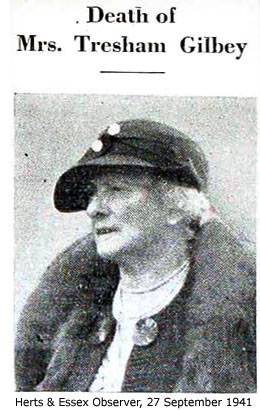 The death of another long-standing and respected member of the community came in September: Annie Sarah Gilbey, aged 76, wife of Tresham Gilbey. Also in September a somewhat farcical situation arose within Bishop’s Stortford UDC over a proposed scheme to build a British Restaurant in the town. Recommendation by a council sub-committee that, to save building costs, it should be incorporated with the present county council run Communal Feeding Centre in South Street was agreed upon, but there was some debate as to whether it should be assumed that county council would pay for the restaurant’s administration costs – a decision that ultimately rested with the Ministry of Food. It then emerged that, as yet, the council had no proper scheme in place to submit to the Ministry of Food for a decision to be made. In the end the sub-committee’s recommendation that the county council be asked to establish and administer a British Restaurant in conjunction with the town’s Feeding Centre, was adopted. The death of another long-standing and respected member of the community came in September: Annie Sarah Gilbey, aged 76, wife of Tresham Gilbey. Also in September a somewhat farcical situation arose within Bishop’s Stortford UDC over a proposed scheme to build a British Restaurant in the town. Recommendation by a council sub-committee that, to save building costs, it should be incorporated with the present county council run Communal Feeding Centre in South Street was agreed upon, but there was some debate as to whether it should be assumed that county council would pay for the restaurant’s administration costs – a decision that ultimately rested with the Ministry of Food. It then emerged that, as yet, the council had no proper scheme in place to submit to the Ministry of Food for a decision to be made. In the end the sub-committee’s recommendation that the county council be asked to establish and administer a British Restaurant in conjunction with the town’s Feeding Centre, was adopted.
At the local Petty Sessions a driver was fined £1 for driving his car at 40mph in London Road. And Second-Lieutenant John Perry, summoned for a similar offence and for not having a driving licence, wrote that he had now been posted abroad. The summonses against him were dismissed.
British civilian casualties figures for September: 217 killed
Not reported in October, due to censorship, was the survival of a pilot who was thrown out of his Supermarine Spitfire during severe turbulence at Butlers Hall, Thorley (5 October). Or that in November a Hawker Hurricane had made a forced landing in Bishop’s Stortford. That same month a request by the trades council to open cinemas on a Sunday during the winter months was deemed not possible by Bishop’s Stortford UDC and on the last day of November, Prime Minister Winston Churchill celebrated his 66th birthday.
Near normality had returned to the town at the start of December, but events on the other side of the World ensured that the war would now last far longer than anyone expected. On 7 December the Japanese sank most of the American Pacific Fleet in a surprise attack on Pearl Harbor, killing more than 2,000 serviceman, at the same time beginning an invasion of the British Empire in the Far East. The repercussions were immense, both the United States and Britain declaring war on Japan the following day. On 10 December the Japanese destroyed Royal Navy battleships Prince of Wales and Repulse, and on 11 December Germany declared war on the United States. It now truly was a World War.
|


 In March the financially challenged British Government launched another National Savings incentive called ‘War Weapons Week’. Heavily publicised in the national and local press, the public were asked to ‘help buy weapons to defeat Hitler’ by purchasing Defence Bonds, Savings Certificates or Savings Stamps. Rising to the challenge, organisers of the Bishop’s Stortford, Sawbridgeworth and District fund (due to take place 9–15 March) optimistically set their sites on raising £75,000. So none were more surprised than they when by the end of the week the public had invested over £184,000. In celebration of this phenomenal amount, the final day of the campaign was marked with a military parade in Sawbridgeworth and Bishop’s Stortford – a detachment of 90 armed infantry from a north of England regiment that had survived Dunkirk, marching through both towns.
In March the financially challenged British Government launched another National Savings incentive called ‘War Weapons Week’. Heavily publicised in the national and local press, the public were asked to ‘help buy weapons to defeat Hitler’ by purchasing Defence Bonds, Savings Certificates or Savings Stamps. Rising to the challenge, organisers of the Bishop’s Stortford, Sawbridgeworth and District fund (due to take place 9–15 March) optimistically set their sites on raising £75,000. So none were more surprised than they when by the end of the week the public had invested over £184,000. In celebration of this phenomenal amount, the final day of the campaign was marked with a military parade in Sawbridgeworth and Bishop’s Stortford – a detachment of 90 armed infantry from a north of England regiment that had survived Dunkirk, marching through both towns. In April the resignation of a local Billeting Officer led the Civil Defence Committee to advertise for a suitable candidate at a wage of £2 per week. Hertfordshire County Council informed Bishop’s Stortford UDC of an 8 week delay for whistles required by the town’s ARP wardens and members of fire parties, and local council workmen asked for a wage rise to meet the increased cost of living. Despite having already received two bonuses of two shillings (20p) each time, the council recommended a further rise of four shillings (40p) per week war bonus. Many residents expressed ‘indignation at such extravagance’ but the council couldn’t exactly argue with the request, having already given a substantial bonus to officials and office staff.
In April the resignation of a local Billeting Officer led the Civil Defence Committee to advertise for a suitable candidate at a wage of £2 per week. Hertfordshire County Council informed Bishop’s Stortford UDC of an 8 week delay for whistles required by the town’s ARP wardens and members of fire parties, and local council workmen asked for a wage rise to meet the increased cost of living. Despite having already received two bonuses of two shillings (20p) each time, the council recommended a further rise of four shillings (40p) per week war bonus. Many residents expressed ‘indignation at such extravagance’ but the council couldn’t exactly argue with the request, having already given a substantial bonus to officials and office staff. As Britain’s Forces became more widely stretched at home and abroad, the British age limit for call-up was raised from 40 to 51. Exempt occupations considered essential to the war effort at home included Tax inspectors, engineers and coal miners.
As Britain’s Forces became more widely stretched at home and abroad, the British age limit for call-up was raised from 40 to 51. Exempt occupations considered essential to the war effort at home included Tax inspectors, engineers and coal miners. On 16 May, after eight months of almost continual bombing of British cities, the Blitz ended. Hitler, having now set his sights on the invasion of Russia, called off the mass attacks to move his bombers east. The RAF, however, didn’t reciprocate and continued to bomb German cities and industrial areas. Despite Hitler’s change of plan the building of public air-raid shelters continued, though by now many people in Bishop’s Stortford completely ignored the air-raid sirens and rarely used the shelters. To find out exactly who did use them, the council invited people to register for admission tickets and employed shelter marshals to supervise entrance.
On 16 May, after eight months of almost continual bombing of British cities, the Blitz ended. Hitler, having now set his sights on the invasion of Russia, called off the mass attacks to move his bombers east. The RAF, however, didn’t reciprocate and continued to bomb German cities and industrial areas. Despite Hitler’s change of plan the building of public air-raid shelters continued, though by now many people in Bishop’s Stortford completely ignored the air-raid sirens and rarely used the shelters. To find out exactly who did use them, the council invited people to register for admission tickets and employed shelter marshals to supervise entrance. The likelyhood of parents of evacuee children reading and taking note of such wise words was pretty remote, and countless evacuee children were taken back to the cities. Their departure, however, made little difference to complaints of a local food shortage by the Bishop’s Stortford branch of the Women’s Co-operative Guild. Their argument certainly seemed a valid one because since the start of war, although Stortford’s population had risen by some 60 percent, poor distribution methods meant that supplies were still being allocated on a 1938 basis.
The likelyhood of parents of evacuee children reading and taking note of such wise words was pretty remote, and countless evacuee children were taken back to the cities. Their departure, however, made little difference to complaints of a local food shortage by the Bishop’s Stortford branch of the Women’s Co-operative Guild. Their argument certainly seemed a valid one because since the start of war, although Stortford’s population had risen by some 60 percent, poor distribution methods meant that supplies were still being allocated on a 1938 basis.  Clothing was rationed from 1 June and later in the month so too were eggs. On the plus side, at least the Luftwaffe's bombings and nuisance raids had eased considerably. In the town, though, there now seemed more people in uniform than ever before: Forces personnel either stationed here or on leave, policemen, the Home Guard, Civil Defence, Women's Voluntary Service, and many boys aged 16 – 18 who had joined the *Air Training Corps (ATC). Membership of the ATC was also open for much younger lads but they couldn’t wear the uniform until aged 16. ATC training took place in the evenings at Bishop’s Stortford College.
Clothing was rationed from 1 June and later in the month so too were eggs. On the plus side, at least the Luftwaffe's bombings and nuisance raids had eased considerably. In the town, though, there now seemed more people in uniform than ever before: Forces personnel either stationed here or on leave, policemen, the Home Guard, Civil Defence, Women's Voluntary Service, and many boys aged 16 – 18 who had joined the *Air Training Corps (ATC). Membership of the ATC was also open for much younger lads but they couldn’t wear the uniform until aged 16. ATC training took place in the evenings at Bishop’s Stortford College. The death of another long-standing and respected member of the community came in September: Annie Sarah Gilbey, aged 76, wife of Tresham Gilbey. Also in September a somewhat farcical situation arose within Bishop’s Stortford UDC over a proposed scheme to build a British Restaurant in the town. Recommendation by a council sub-committee that, to save building costs, it should be incorporated with the present county council run Communal Feeding Centre in South Street was agreed upon, but there was some debate as to whether it should be assumed that county council would pay for the restaurant’s administration costs – a decision that ultimately rested with the Ministry of Food. It then emerged that, as yet, the council had no proper scheme in place to submit to the Ministry of Food for a decision to be made. In the end the sub-committee’s recommendation that the county council be asked to establish and administer a British Restaurant in conjunction with the town’s Feeding Centre, was adopted.
The death of another long-standing and respected member of the community came in September: Annie Sarah Gilbey, aged 76, wife of Tresham Gilbey. Also in September a somewhat farcical situation arose within Bishop’s Stortford UDC over a proposed scheme to build a British Restaurant in the town. Recommendation by a council sub-committee that, to save building costs, it should be incorporated with the present county council run Communal Feeding Centre in South Street was agreed upon, but there was some debate as to whether it should be assumed that county council would pay for the restaurant’s administration costs – a decision that ultimately rested with the Ministry of Food. It then emerged that, as yet, the council had no proper scheme in place to submit to the Ministry of Food for a decision to be made. In the end the sub-committee’s recommendation that the county council be asked to establish and administer a British Restaurant in conjunction with the town’s Feeding Centre, was adopted.